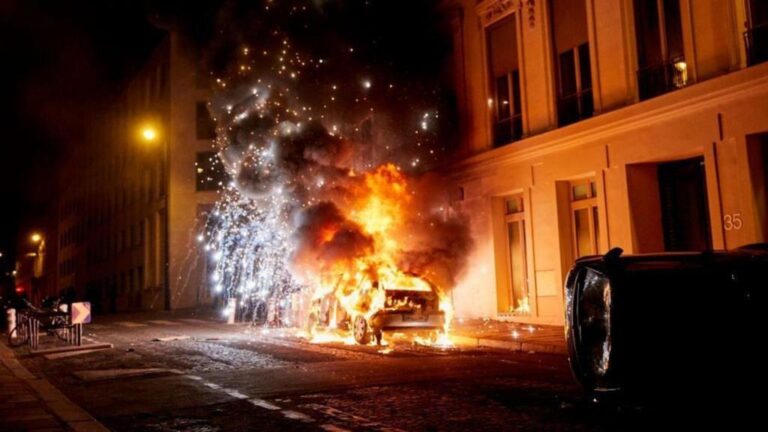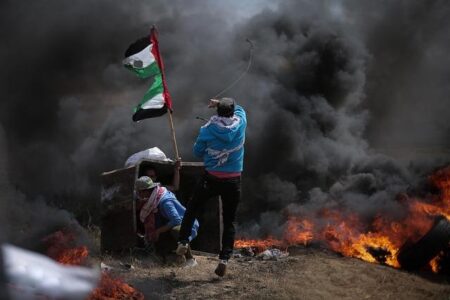Two people have died and 559 were arrested in widespread clashes across France following Paris Saint-Germain’s victory in the Champions League, authorities reported. The celebrations turned violent in several cities as fans took to the streets, resulting in significant unrest and a heavy police response. This outbreak of disorder underscores ongoing challenges in managing public safety during major sporting events in the country.
Casualties and Arrests Mark Post-Match Unrest in Paris
Following PSG’s dramatic Champions League victory, the streets of Paris erupted into violence resulting in a tragic loss of life and hundreds of arrests. Two fatalities were confirmed amid chaotic scenes as celebratory crowds clashed with law enforcement. Injuries were reported on both sides, highlighting the intensity of the unrest that spiraled out of control within hours of the final whistle.
Authorities detained a total of 559 individuals suspected of participating in disorderly conduct, vandalism, and confrontations with police forces. The law enforcement response involved a combination of crowd control tactics including tear gas and water cannons to disperse unruly groups. Below is a summary of the impact and enforcement actions taken during the aftermath:
| Category | Count |
|---|---|
| Fatalities | 2 |
| Arrests | 559 |
| Injured Officers | 16 |
| Vehicles Damaged | 23 |
| Fires Reported | 7 |
- 24/7 police patrols deployed in hotspot areas to prevent further violence.
- Investigation teams actively pursuing leads in cases of arson and property damage.
- Community outreach initiated to restore calm and aid affected residents.
Analysis of Triggers Behind Clashes Following PSG Victory
The violent unrest erupting after Paris Saint-Germain’s dramatic Champions League victory highlights a blend of socio-political tensions and spontaneous exuberance among fans. Key triggers identified include:
- Overcrowding and insufficient crowd control: The surge of fans in public spaces and transport hubs overwhelmed local authorities, contributing to chaos.
- Alcohol consumption and heightened emotions: Celebratory drinking intensified aggressive behavior, escalating minor conflicts into clashes.
- Localized socioeconomic frustrations: Ongoing issues such as unemployment and disenfranchisement found an outlet during the mass gatherings, exacerbating unrest.
Authorities have noted that the mixture of celebration and deep-rooted grievances created a volatile atmosphere. In addition, inadequate communication between police and community leaders limited proactive intervention. The following table summarizes the primary factors and their impact levels based on early reports:
| Trigger Factor | Impact Level | Notes |
|---|---|---|
| Overcrowding | High | Strained public safety resources |
| Alcohol Use | Medium | Increased aggression |
| Socioeconomic tensions | High | Underlying unrest catalyst |
| Communication Gaps | Medium | Hampered proactive measures |
Authorities’ Response and Law Enforcement Strategies in Riot Control
Authorities swiftly mobilized a multi-agency response to contain the unrest that erupted following PSG’s Champions League victory. Law enforcement deployed specialized riot control units equipped with protective gear and crowd dispersal tools including tear gas, water cannons, and stun grenades. Temporary curfews were instated in key neighborhoods to prevent further gatherings, while checkpoints were established to monitor and restrict movement. Coordination between police forces and city authorities was intensified, with real-time intelligence gathering to pinpoint hotspots of violence and mitigate escalation risks.
In addition to immediate crowd control tactics, strategic measures were employed to manage the aftermath and deter future disturbances:
- Increased Surveillance: Enhanced use of CCTV cameras and drone technology enabled precise identification and tracking of rioters.
- Rapid Judicial Processing: Accelerated legal procedures were introduced to quickly process those arrested, aiming for timely justice and reinforcement of law enforcement authority.
- Community Outreach: Authorities initiated dialogues with local leaders and advocacy groups to address underlying tensions and promote peaceful celebrations.
| Strategy | Purpose | Status |
|---|---|---|
| Riot Gear Deployment | Protect officers & control crowds | Active |
| Curfew Enforcement | Restrict movement in high-risk areas | Implemented |
| Surveillance Expansion | Identify offenders & prevent gatherings | Ongoing |
Recommendations for Preventing Future Violence After Major Sporting Events
To mitigate the risk of violence following high-stakes matches, authorities and organizers must adopt a multi-faceted approach centered on proactive engagement and stringent security measures. Enhanced collaboration between law enforcement agencies and local communities is essential to identify potential flashpoints early. This can be achieved by increasing the presence of trained crowd managers and leveraging real-time intelligence to monitor social media platforms for signs of escalating tensions.
Additionally, implementing targeted interventions such as:
- Designated alcohol-free zones around stadiums and fan gathering areas
- Improved public transportation schedules to disperse crowds more efficiently
- Community outreach programs involving fan clubs and local leaders to promote peaceful celebration
- Post-game curfew policies in high-risk areas
can significantly reduce the likelihood of violent outbreaks. A clear communication strategy informing fans about these measures and consequences of disruptive behaviour plays a crucial role.
| Preventative Measure | Expected Outcome |
|---|---|
| Increased Police Patrols | Early intervention and deterrence of violent acts |
| Fan Education Programs | Promote respect and reduce tensions |
| Alcohol Restrictions | Lower intoxication-related incidents |
| Efficient Crowd Dispersal Plans | Minimize crowd density and potential clashes |
Future Outlook
The devastating loss of life and widespread arrests following the celebrations of PSG’s Champions League victory cast a somber shadow over what was meant to be a moment of sporting triumph. As authorities continue to investigate the clashes, calls for greater security measures and community engagement have intensified, highlighting the ongoing challenges of managing public order during major sporting events in France. The incident serves as a stark reminder of the deep social tensions that can erupt amidst moments of national celebration.




